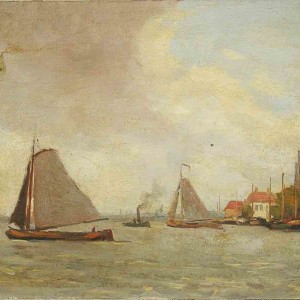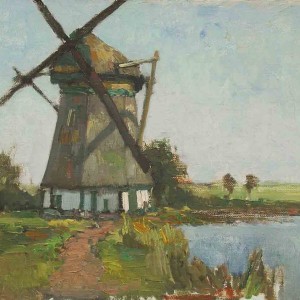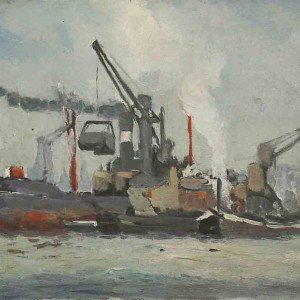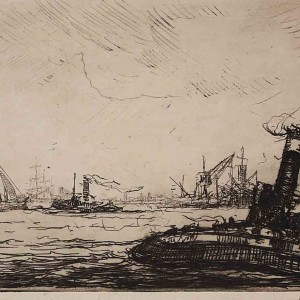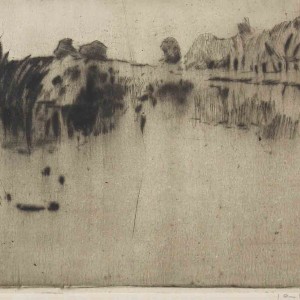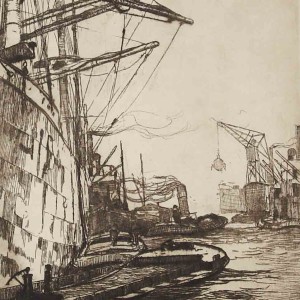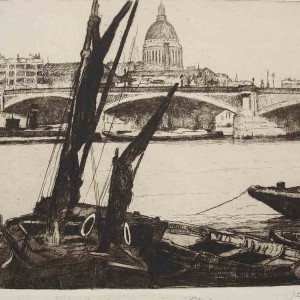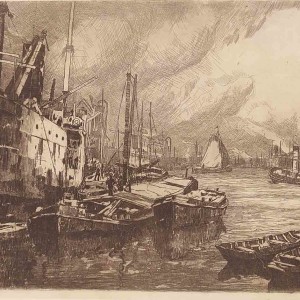under development…
This page provides a visual synopsis overview of examples of the various mediums explored by Jan Sirks. There are five examples of paintings, etchings and drawings and watercolour.
Landscapes, cityscapes, ports, rivers, docks and figures are the main subjects of Jan Sirks’s paintings. In the early 1900s we see the first oil paintings. Sirks chose the immediate environment of Rotterdam with its farms, ditches and paddocks. During World War 1 Sirks joins the Theosophical Society and he paints the first busy urban landscapes with isolated figures. The landscape paintings of this time show a pre-occupation with horizontal and vertical lines. In the early 1920s Sirks returns to working inside the actual farmyard, his palette has strong tonal contrast and he depicts detail rather than his earlier vistas. His palette becomes increasingly more symbolic with his use of orange and green. In the 20s Sirks moves increasingly closer to his subject matter and we see a bold palette in his summer skies and his autumnal colours are vibrant. Sirks treatment of the landscape changes as he matures as his vistas become increasingly larger.
- Rotterdam river view c 1910 33 x 47 cm.
- Study farm landscape 79 x 66 cm.
- Windmill 1920 36 x 45 cm.
- Rotterdam Maashaven c 1920 41 x 60 cm.
- Reeuwijk 1935-36 31 x 44 cm.
Jan Sirks created almost 300 etchings. The subject matter ranges from intimate city-views to landscapes, river-scenes, busy ports and architectural landmarks around the Netherlands. It also includes figures, animals, birds and trees. His first etchings were made with the softer zinc plate and his aim was a painterly style which is particularly evident in his portrayal of workhorses. From around 1916 Sirks worked with the unforgiving copper. Sirks aimed to portray day to day life with detail and activity and gets increasingly closer to his subject matter as he matures. His tonal contrast increases and his skies evolve from gentle clouds to turbulent angry skies.
- Rotterdam tugboat c1914 24 x 17 cm.
- Water scene c 1916 12 x 16 cm.
- Rotterdam Katendrecht c 1918 24 x 16cm.
- The Thames with Black Frier Bridge 1927 18 x 27 cm.
- Rotterdam Rhine Harbour 30 x 42cm.
